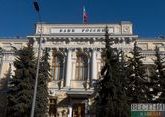This year, approximately 35-50 banks can be deprived of licenses in Russia, according to the review of the January situation in the Russian banking sector prepared by the RIA Rating agency.
In the period of January-February (as of February 20), nine banking institutions were deprived of licenses (11 - November-December and 4 - September-October 2017), the survey says. At the same time, one of nine banking institution was deprived of license voluntarily against two in the previous period (November-December).
According to the RIA Rating agency, the total volume of banking assets, forcibly deprived of licenses this year, exceeded 40 billion rubles. For comparison, the assets of banks deprived of licenses in November-December amounted to 45 billion rubles.
Experts of RIA Rating predict that the cleanup of the banking sector will continue this year. According to their estimates, by the end of the year, the banking sector may be short of about 35-50 banks. At the same time, the analysts do not exclude that several major banks out of the top 50 in terms of assets will be deprived of licenses this year.
In its turn, Deposit Insurance Agency said in its analysis of the development of the retail deposits market in 2017 that the growth of bank deposits of Russians in the reporting period in relative terms amounted to 7.4%, and without currency revaluation - 8.6%.
Thus, the volume of household funds in banks last year increased by 1 trillion 787.1 billion rubles and amounted to 25.987 trillion rubles. At the same time, the average level of interest rates for ruble-denominated annual deposits in the amount of 1 million rubles. decreased by 1 percentage point. - from 7.4% to 6.4%.
The DIA report notes that the share of deposits in the reporting period in foreign currency decreased from 23.7% to 20.6%, which was the result of strengthening of the ruble and low interest rates on deposits in foreign currency, the agency explained.
The report also draws attention to the increase in the share of 30 largest banks in terms of the volume of deposits from 85.2% to 87%.
In addition, there was an increase in the DIA liability insurance amount from 67.8% to 69.2% of insured deposits in 2017.
The advisor on macroeconomics to the CEO of the 'Opening-Broker' brokerage house, economist Sergey Hestanov, speaking with Vestnik Kavkaza, commented on how risky is to keep money in Russian banks today .
"If it is about individuals, there is a deposit insurance system for amount less than 1.4 million rubles that reduces the risks to zero. Therefore, those who have money under the deposit insurance limit have nothing to fear," the expert explained.
At the same time he noted that those who have much more money, or those who are legal entities not falling under the deposit insurance system, need to be more careful. "The logic is very simple: individuals should divide their funds into portions of 1.4 million. And legal entities or individuals, who have much more than 1.4 million, should pay attention to systemically important banks," he noted.
In addition, the expert said that the current cleanup of the banking sector facilitates the flow of deposits from small banks to larger ones linked to the public sector.
The professor at the department of the stock market and investments at the Higher School of Economics, Alexander Abramov, in turn, said that now no one can guarantee that nothing will happen with the bank, except large state-owned banks, "But on the whole, the estimate that in 50 banks can lose licenses in 2018 is still overestimated," the expert said. .
At the same time he drew attention to the fact that now there is some easing of Central Bank's monetary and credit policy. "This makes it possible for banks to receive additional incomes," Alexander Abramov said.
In addition, he expressed the opinion that, indeed, there is a flow of deposits from small banks into large state-owned banks. According to the expert, this is due to the fact that last year three largest private banks were nationalized.
He also shared his opinion about how Russians treat banks against the background of recent events in the banking sector. "With regard to deposits, the interest of the population towards banks is diminishing, as the interest rate is reduced. Therefore, alternative instruments appear on the securities market, in which the population prefers to invest. But at the same time, the population's credit activity is growing at an abnormal rate," the expert explained.










